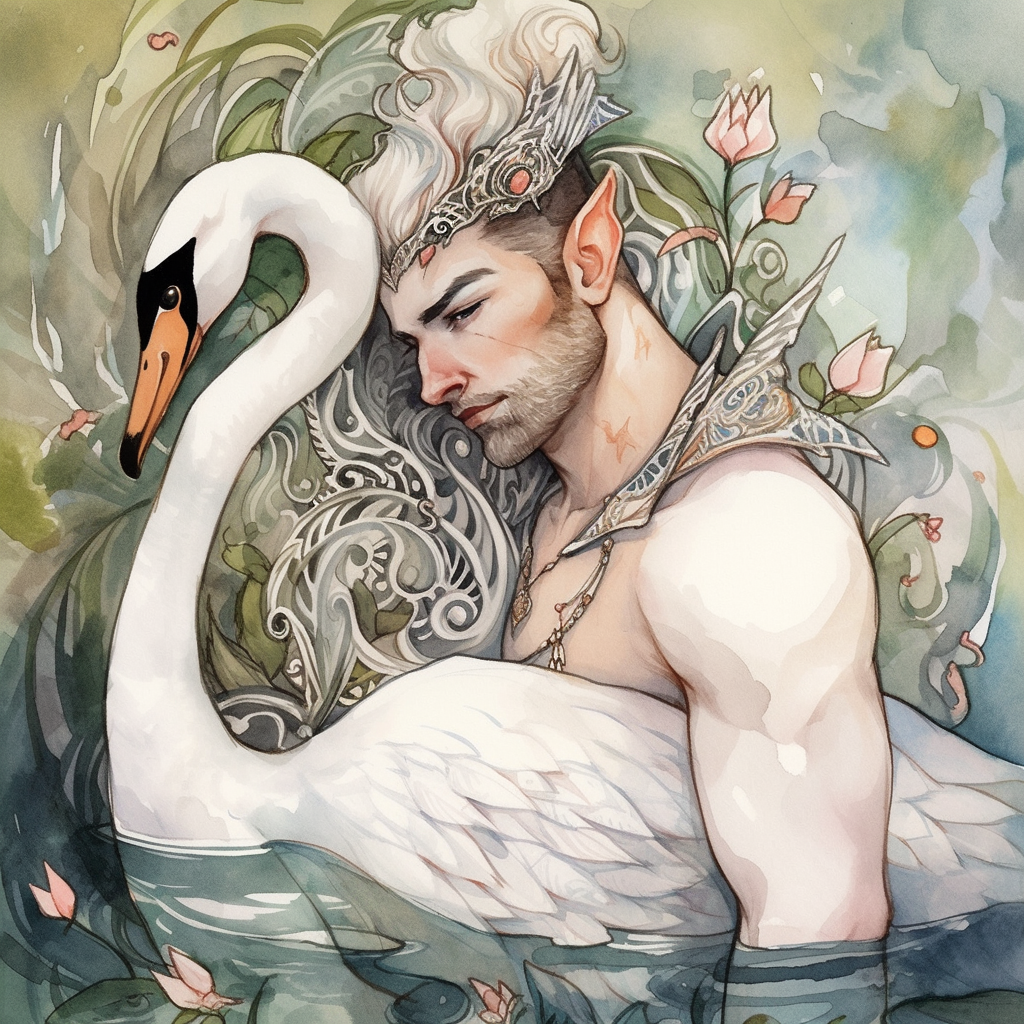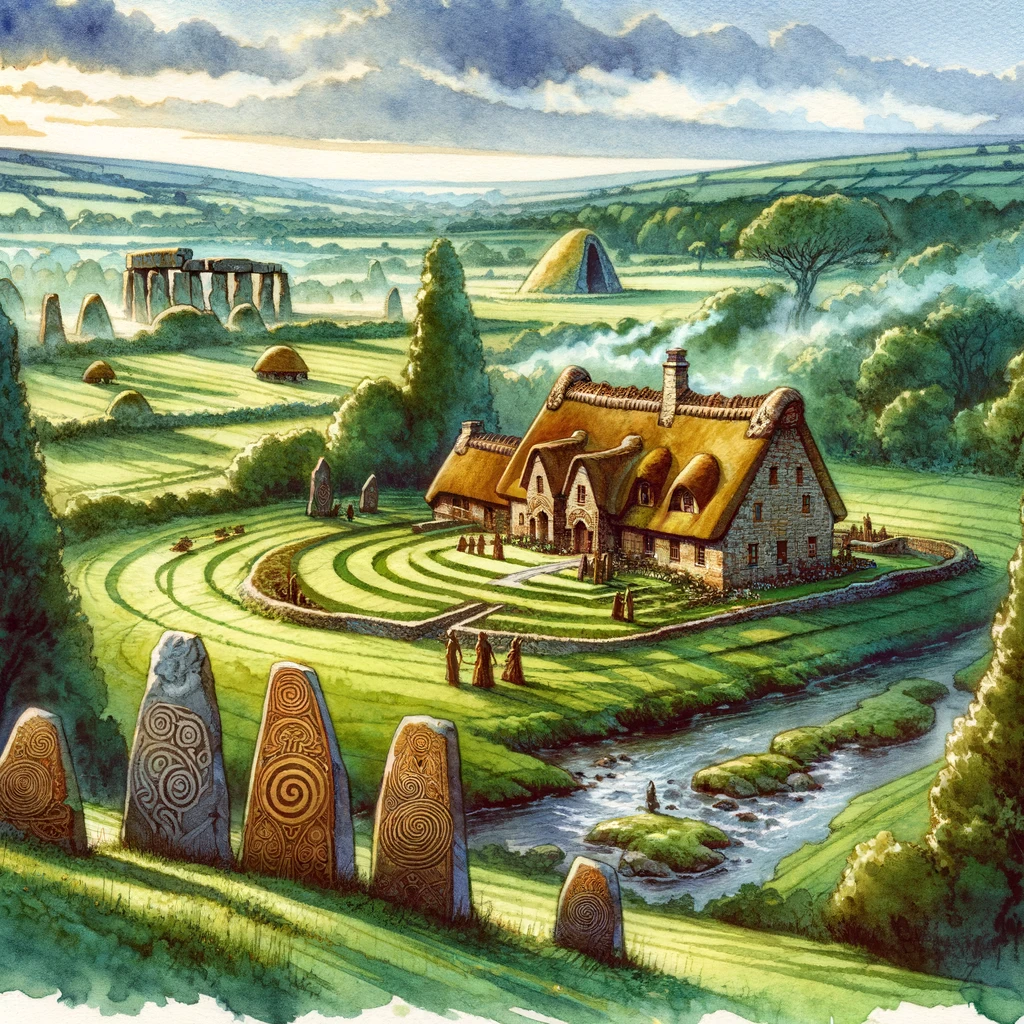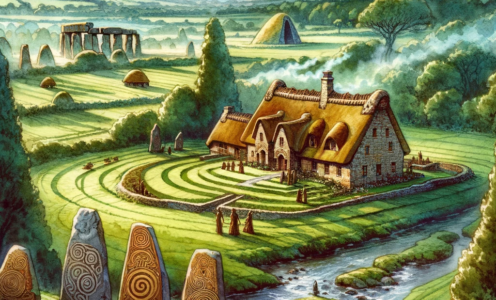Bruig na Boinne
Location: Outlands / Tir na Og
Realm of Aengus of the Celtic Pantheon and Tuatha de Danann
Now here’s a tale worth the telling. Deep in the heartlands of Tir na Og, Bruig na Boinne is a jewel steeped in the ancient magic and myth. This ain’t just any old spot; it’s a place where the veil ‘tween the worlds is thin as a razor, and the chants of the ancient Celts still echo through the air.
The realm has a landscape that’s as lush and green as the finest emerald you’ve ever laid your peepers on. The rolling hills are dotted with ancient megaliths, their stones etched with spirals and symbols as old as time itself. These are doorways to other realms, opening passages to Prime worlds where the Celtic pantheons touch.
At the heart of Bruig na Boinne lies Newgrange, a grand tomb older than the hills. It’s a massive structure, circular and imposing, with a long passage leading into its depths. Once a year, during the philosophical winter solstice, the rising sun aligns perfectly with this passage, illuminating the inner chamber in a spectacle that’s nothing short of magical.
The River Boyne flows gracefully through this land, its waters clear as crystal tears. As well as its famous swans, some say that the river carries the secrets of the ages, and those who listen closely might just catch a word or two as the river gurgles and gushes.

The air in Bruig na Boinne is always filled with the scent of wildflowers and the whisper of tranquil winds. But don’t be fooled by its beauty, berk; Bruig na Boinne is as powerful as it is pretty. It’s a place of ancient magic, where the druids of old performed their rites and the heroes of the Celts walked the land. The spirits of these ancient times still linger, their presence a constant reminder of the realm’s deep connection to the past.
The Manor House in Bruig na Boinne is the real gem of the realm. It’s part of an elegant, sprawling estate, its architecture a seamless blend of ancient Celtic designs and the whimsical styles of the fey. It’s a place where the old world meets the new, where history and legend intertwine like the ivy climbing its stone walls.
From the outside, the Manor House looks like it’s been standing since the dawn of time, its stones weathered by ages, yet it holds a charm that’s timeless. The roof is thatched, and the windows are paned with stained glass, which cast colourful patterns on the floors and walls when the sun hits just right.
Step inside, and you’re in a world of antiquity and luxury. Of course, the magical manor is bigger on the inside. The main hall is vast, with a ceiling that arches high above, supported by columns carved with scenes from Celtic myths. There’s a great fireplace at one end, always burning with a magical fire that warms but never consumes fuel or smokes. The air is filled with the scent of peat and the subtle hint of ancient incense.
The Manor House isn’t just a feast for the eyes; it’s alive with the echoes of the past. Each room in the Manor House has a tale to tell. The library is a trove of ancient wisdom, its shelves lined with scrolls and tomes older than some planes, filled with the lost knowledge and secrets of the Celtic people. The dining hall, with its long oak table, has seen feasts that have hosted the entire Celtic pantheon, its walls adorned with tapestries depicting their heroic deeds. And the beams, well they say that axe stuck in the main beam is still there from that time the Morrigan started a fight over dessert. She wasn’t invited back for a long time after that incident.
Bruig na Boinne is the realm of Aengus, the Celtic power of love—but it hasn’t always been his; that story has been told elsewhere.
But it’s not all about the past. The Manor House is also a place of living magic. The gardens are a testament to this, a maze of vibrant flora, enchanting fountains, and hidden nooks, where the veil between the mortal world and the Otherworld grows thin.
Source: Jon Winter-Holt, mimir.net. Canonwatch: Aengus and Bruig na Boinne are not in the Planescape canon. They are from Celtic mythology and I’ve adapted the story and slotted them in to Tir na Og.


